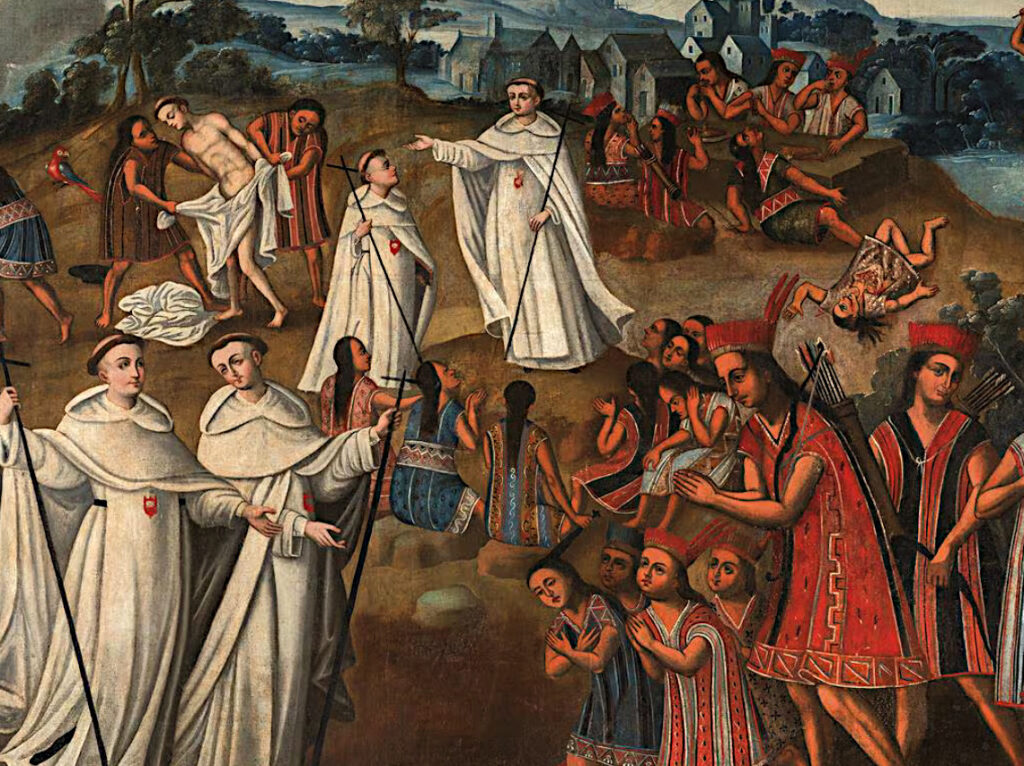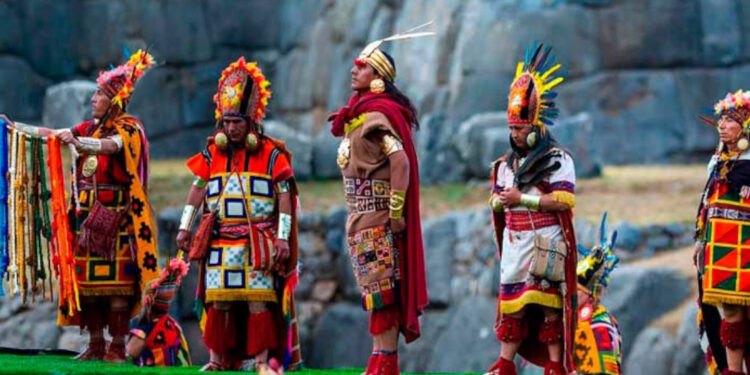In the vast and enigmatic Inca Empire, a secret language echoed through the halls of power, reserved exclusively for the elite. This language, known as Puquina, is spoken of almost mythically, as it was neither Quechua nor Aymara, the more widely used languages in the Andes. The story of Puquina is shrouded in mystery, and although it is now extinct, its legacy endures in names, titles, and archaeological remains that evoke a glorious past.
The Secret Language of the Inca Elite
Inca Garcilaso de la Vega, a mestizo writer of the 17th century, wrote about the existence of this mysterious language in his Royal Commentaries of the Incas (1609-1617). In his words, “the Incas had another particular language, which they spoke among themselves, which the other Indians did not understand nor was it permissible for them to learn, as it was considered divine language.” This quote feeds the fascination with Puquina, a language thought to be almost sacred, its exclusivity intended for the highest echelons of Incan power.
It was not the common language of the empire’s subjects, like Quechua or Aymara, but rather a language reserved for nobility, for those who governed the largest empire in South America. The Magistrate of Huancavelica, Cantos de Andrada, also mentioned in his letters of 1586 the existence of a language distinct from the predominant languages of the Andes. This suggests that Puquina remained in use among the elites long after the expansion of Quechua and Aymara.
Neither Ancient Quechua nor Aymara
What makes Puquina even more intriguing is that it has no direct relation to Quechua or Aymara. It was neither an ancient form of Quechua nor an archaic dialect of Aymara; it was an entirely distinct language. Though both languages gained prominence and became the primary languages of the empire, Puquina remained the language of nobility, priests, and leaders.
Some remnants of this language survive in personal names and noble titles. Names like Korekenque and Manco, and titles such as Capac (great lord), are legacies of the Puquina language. Additionally, many place names, such as Colcapata (a location in Cuzco), have roots in this language. This suggests that, although Puquina became extinct as a spoken language, its traces are still alive in the landscape of the South American Andes.
The Decree of Viceroy Toledo and Evangelization Efforts
In 1575, Viceroy Francisco de Toledo recognized Puquina as one of the “major languages” of the Andes, along with Quechua and Aymara. The viceroy decreed that Puquina should be considered in evangelization efforts. However, Spanish missionaries were practical: they developed evangelizing and grammatical material only for Quechua and Aymara, as these were the languages spoken by most of the population.

Despite this, there were attempts to create linguistic material in Puquina. The Jesuit priest Alonso de Barzana (1530-1597), a fervent evangelizer, developed a grammar and a small lexicon for this language. These texts, though limited, were religious catechisms and other documents intended to aid in converting Inca nobles who spoke Puquina to Christianity. Although these works did not survive the test of time, their existence confirms the interest this language held in the 16th and 17th centuries.
The Geography of Puquina
Thanks to colonial documents from the 16th and 17th centuries, we know that Puquina was spoken in several regions. It was present around Lake Titicaca, in what is now Puno, but also extended to Arequipa, Iquique in Chile, and Potosí in Bolivia. Sarmiento de Gamboa, in his chronicles of 1551, describes its use in these areas, confirming the expansion of this language long before the Incas arrived.
“The Incas had another particular language, which they spoke among themselves, which the other Indians did not understand nor was it permissible for them to learn as it was considered divine language.”
Puquina had a unique structure, with five vowels, and its influence can be traced in the toponymy of these regions. Radicals such as Laque (ravine), Baya/Paya (plain), Mora (center), and Cachi (enclosure) survive in place names like Titicachi (sun’s enclosure) and Kontiti (burning deity). These linguistic remnants testify to the importance Puquina once held.
Puquina, Language of Tiahuanaco
The academic current that emerged in the 20th century, primarily developed in Peru, suggests that, according to evidence, the language of Tiahuanaco was not Aymara but Puquina. Tiahuanaco, one of the oldest and most enigmatic empires in South America, greatly influenced the Incas. When the Incas arrived in Cuzco, most of the region’s population spoke Aymara.
Studies suggest that the Incas arrived in Cuzco speaking Puquina, as it was the language predominant in areas around Lake Titicaca. Upon arriving in Cuzco, the Incas adopted bilingualism. However, they maintained Puquina as their ceremonial and political language, while Aymara was used in everyday life. By the third generation of Incas, the elite were fluent in both Puquina and Aymara.
The Decline of Puquina
Puquina began to decline rapidly with the arrival of the Spanish conquerors. In 1575, Viceroy Toledo decreed that the main languages of the viceroyalty were Quechua, Aymara, and Puquina. However, the missionaries, seeking efficient evangelization, opted to focus on Quechua and Aymara, spoken by a larger number of people. Thus, Puquina was set aside, losing its relevance.
Despite Puquina’s disappearance as a common language, efforts were made to preserve it. Jesuit Alonso de Barzana (1530-1597) tried to document it through a grammar and lexicon, developing religious texts and a small catechism in Puquina. However, these efforts were insufficient to prevent its extinction.
The decline of Puquina was largely due to the fall of the Inca elite after the conquest and the consolidation of Quechua and Aymara as the dominant languages in colonial Peru. Although the language was nearly forgotten, today some Peruvian academics and linguists are working to rediscover and revitalize it.
One of the main experts in this endeavor is Dr. Rodolfo Cerrón-Palomino Balbín, professor and linguist, who has been researching the history and vestiges of Puquina in an attempt to reconstruct parts of this enigmatic language. Recent studies suggest that, although no longer spoken, there is still much to discover about this mysterious language that once served as the voice of the gods and Inca emperors.
Puquina: Lost in Time, but Not in Andean Legacy
Puquina is more than an extinct language; it is a symbol of the cultural richness of pre-Hispanic Peru. A language that, by being used by the Inca elite, reflects the power, mysticism, and control of the emperors over their vast empire. The fact that the Spanish ignored this language in their evangelizing efforts contributed to its neglect. However, the names, place names, and linguistic vestiges that have reached us today, along with academic efforts to recover it, remind us that Puquina still holds secrets about the civilizations that spoke it.
The resurgence of interest in this language may, one day, restore its place in the study of pre-Hispanic cultures. Perhaps, in a not-too-distant future, Puquina will recover part of its voice and once again resonate as it did in the ceremonies and rituals of the Incas and the cultures that preceded them.
What do you think? Puquina is just one of the many fascinating mysteries of Incan culture. Did you know about this secret language? We would love to hear your comments and thoughts on the cultural legacy of the Incas.
If you found this article interesting, share it with friends or on your social media! We want more people to know this part of our heritage and to keep the memory of our ancestors alive.




